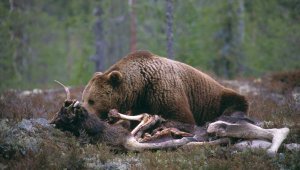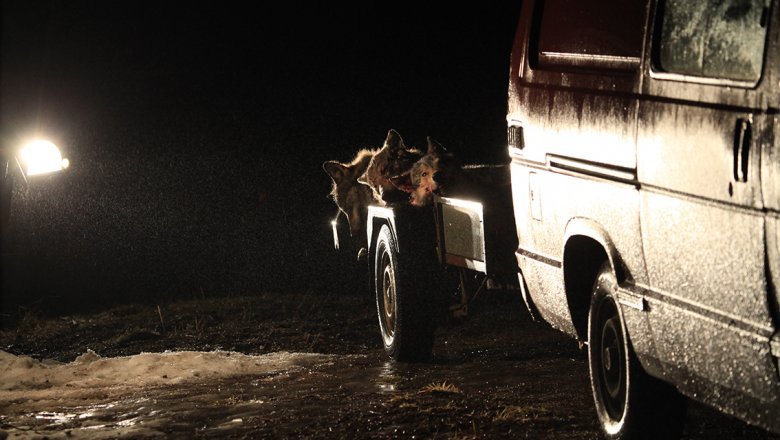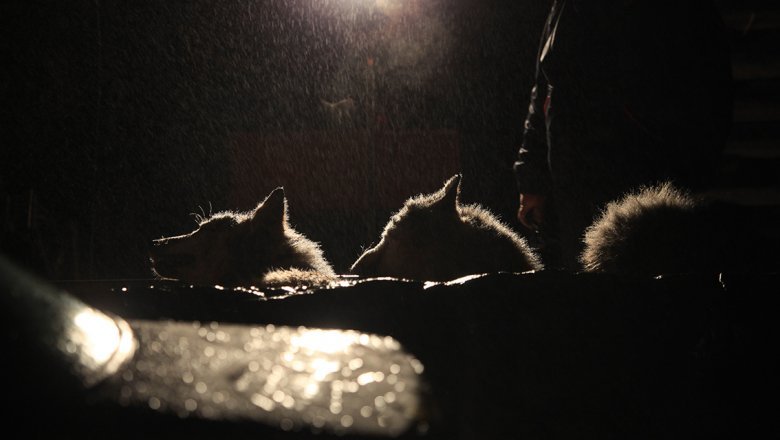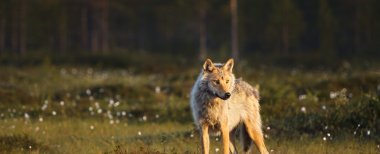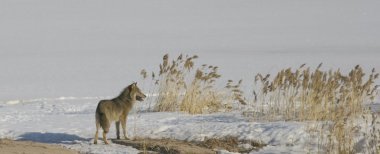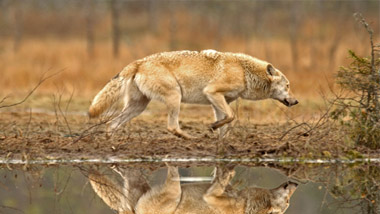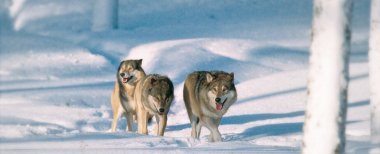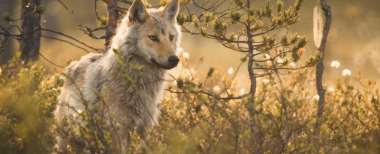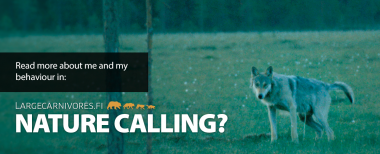Wolf hunting is a team effort
Wolves are most often hunted with the aid of flag line; a twine with small flags attached to it at even intervals. Wolves are usually afraid to cross this line and it is used to encircle them. The flag line is put in place by two hunter patrols moving upwind in opposite directions. The hunter who goes first releases the line from a spool and the second hunter sets the line at the appropriate height. When the flag line has totally surrounded the wolves, the encirclement can be tightened to suit the needs of the hunt, depending on the terrain.
The flag line can be made more effective with scents. Instead of the traditional flag line, hunters can also use plastic ribbon that moves easily in the wind and is easier to handle than flag line.
Shooters position themselves inside the encirclement near the line so that a wolf can't get between the line and the awaiting hunter. Then a beater or two will slowly proceed downwind to drive the wolves toward the shooters. The beater keeps the wolves moving by following fresh tracks.
When a shooter sees a wolf approaching, he or she must wait perfectly still. The shot should only be taken when the wolf is within effective range. The best weapon for wolf hunting is a rifle.
Wolves can also be hunted without a flag line. Wolves that have gotten used to the smells and sounds of human habitation might not stay within the flag line encirclement. In these cases the shooters are positioned to surround the encirclement from as many directions as possible.
Hunting Wolves under a Derogation
Under Section 37 of the Finnish Hunting Act, the wolf is protected at all times. However, the hunting legislation allows for the granting of derogations by virtue of Section 41 a, provided that there is no other satisfactory solution and the decision is not detrimental to the maintenance of the species at a favourable conservation status in their natural range. A derogation may be granted on grounds of conservation of other wildlife or prevention of damage to livestock farming, in the interest of public safety or for reasons of a social nature.
By virtue of a derogation, wolf hunting may be permitted at any time of year. The Finnish Wildlife Agency processes applications and makes decisions on a case-by-case basis. A government decree specifies an assessment of the preconditions for such derogations and stipulates a maximum period of validity of 21 days. Additionally, the discretionary powers of the Finnish Wildlife Agency are limited by a decree of the Ministry of Agriculture and Forestry, which stipulates the maximum number of wolves bagged as quarry by virtue of derogations each hunting year. Any wolf slain by virtue of a derogation should be notified to the Finnish Wildlife Agency and the police immediately on the following working day.
A wolf bagged as quarry belongs to the State and must be delivered to Natural Resources Institute Finland. The research institute should destroy the game animal, hand it over for a purpose of public good or sell it on the State’s account. If any parts of the wolf are to be sold, a CITES permit should be obtained from the Finnish Environment Institute along with a certificate of legal origin from the Finnish Wildlife Agency.
